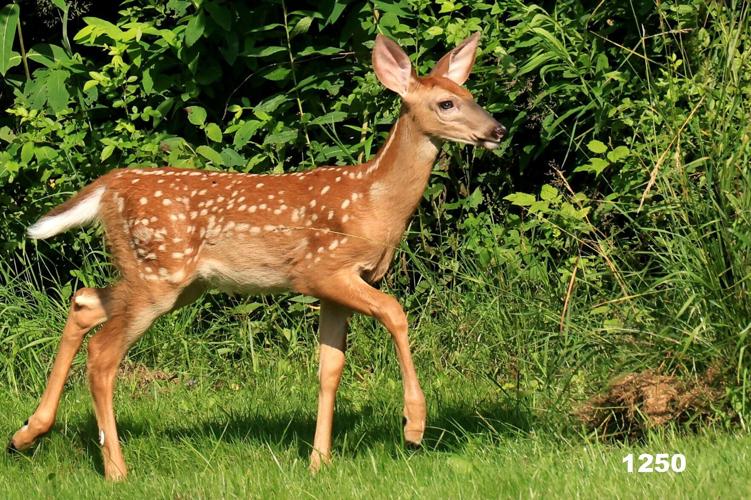If you hit a deer you are probably going to sustain some damage to your vehicle, or maybe personal injuries, and your insurance rate may go up. It is usually later in the fall that this risk increases when deer are being hunted and the mating season is on.
During the regular the hunting seasons (bow starting October 1, gun starting November 18, and then late seasons in progress until January 1) deer are moving around a lot and are often times pushed out of their normal habitat. At night they try to return to their normal “home” and this is when you mayhave an encounter with them.
During the rut (mating season, October through December) the does are being chased by bucks, the bucks are roaming out of their familiar home ranges, and they're not aware where the dangers are. This all makes deer a serious danger to motor vehicle drivers, night and day.
The early September antlerless deer season (September 9-17) means the dangerous time for drivers arrives earlier now. Leaves are still on the trees and brush along the roads, making deer less visible. Crops are being harvested, so deer are out in open areas too, looking for spilled grains, and sometimes close to the roads.
How to avoid a collision with a deer? Well, sometimes it is unavoidable, but there are things you can do to lower the risk.
The first thing is to stay alert for deer on either side of the road, both near and at a distance. Reducing speed, especially at night, is always a good idea. Many times deer are confused as vehicles pass by and they sometimes will dart across the road. Sometimes one deer or a small group will cross in front of you, and then when you think you are safe a straggler comes charging across. This is often true of fawns, which are still traveling with their mothers and are not paying attention to her actions.
Most of the time deer in fields are not a problem, but you never know — maybe a predator shows up behind them and puts them in flight towards you.
When spotting deer near the road, day or night, I give them a few blasts of the horn (and flick my headlights up and down at night) to let them know I'm there and maybe make them a bit more cautious of vehicles in the future. In fact I often blow the horn and flick the lights when going through a known deer crossing area, even when I don't see any deer. When using these tactics you need to keep your eyes on the deer to see how they react to that. I once noted a doe near the road actually ran out in front of me when I beeped the horn.
Another good idea is to note where you have seen deer near the road in the past and be extra cautious when going through those areas. There are “deer crossing” signs at proven active deer crossing areas but deer don't always play by the rules — and besides, they can't read.
When you see fawns you should be especially careful. They are not on their smart phones but they are still are not very alert to the dangers around them and often just take off in any direction when they are suddenly spooked.
Keeping your high beams on at night is also a good way to avoid deer. Your lights may not show you the whole deer very well but they usually “light up” a deer's eyes to give you a clue they are close. My Subaru Forester has lights that shine off to the side of the road more then my previous vehicle, and I have found that very helpful in spotting those eyes. It also helps if your passenger is alert for deer too. My lady friend is really super at spotting those deer and that has saved us many times.
There are “deer whistles” you can mount on the front bumper of your vehicle but my understanding is they don't work that well.
We don't want to hit any wildlife that is crossing the road, but swerving to miss a raccoon, opossum or any other small creature is not worth the risks to you, which include injury and going off the roadway. Your best bet is to stay alert and be serious about the things mentioned above.





















Commented
Sorry, there are no recent results for popular commented articles.